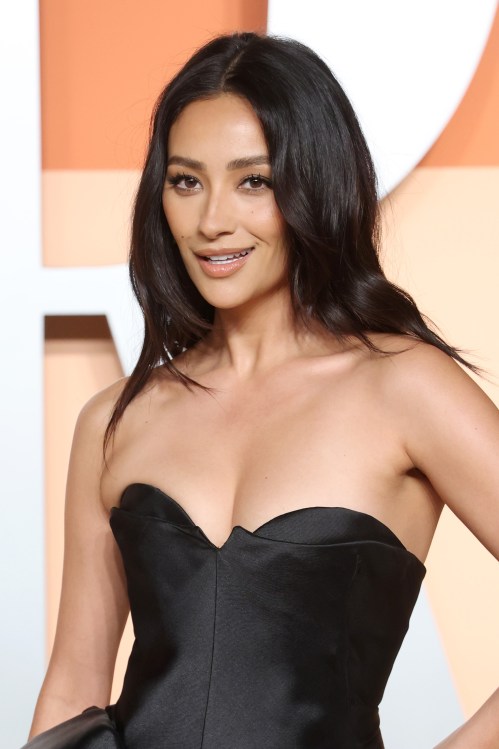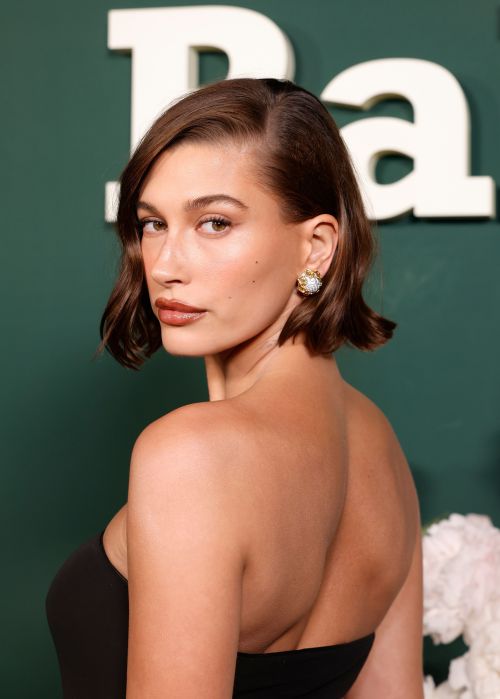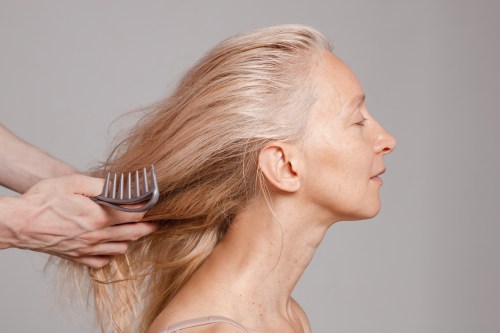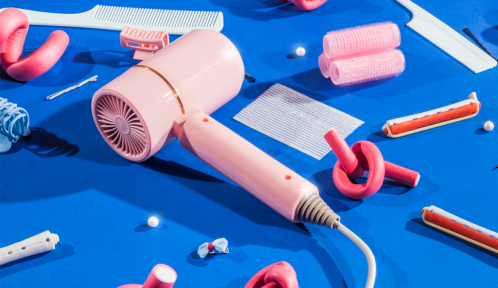Why having healthy hair could be ruining your style
You don't have to choose between having healthy lengths and a hairstyle that holds. Jon Reyman of Spoke & Weal shares how to deal.

In a perfect world, the pursuit of healthy hair would correlate directly with how well it held a style. But unfortunately, fancy treatments and pricey products that promise soft strands don’t always equate to good hair days on repeat. Sometimes, the healthiest strands are straight up the hardest ones to style.
Think of it this way: The bottom lengths are the part of your hair that’s been on your head the longest and therefore they’ve been the most abused; however, magically they’re also the easiest to keep curled. The hair at your roots is the healthiest, since it’s fresh and hasn’t been subjected to harsh brushing, chemical treatments, or heat styling, but sometimes it sort of just hangs there lifelessly.
Sometimes, the healthiest strands are straight up the hardest ones to style.
As Jon Reyman, hairstylist and owner of Spoke & Weal salons explains it, those with softer hair will notice they have trouble getting strands to hold a style since there’s no real foundation on which to build (the cuticle is smoothed down, so a style doesn’t find grip), whereas coarser hair that has a more lifted cuticle as well as some breakage, provides a natural structure to keep curls, waves, and updos in place.
Achieving the yin-and-yang of healthy hair that holds a style comes down to one simple piece of truth, according to Reyman: A little damage is necessary. Your strands, he explains, are at their best when straddling the fine line between being roughed up and well taken care of. In other words, it’s all about balance.
So just how do you bridge the gap between healthy hair and a style that holds on all day? Here, all the things you need to consider so that your hair can have it all.
Read on for Reyman’s tips on giving your hair the best of both worlds and making sure your hair can hold any style you want.
The cut and color
The quickest route to dealing with overworked, brittle hair (that’s so damaged, it never does anything you want it to) is to give it a snip. Chopping off damaged ends off—or even getting a minor trim—will make your hair look and feel so much better. Ahead of getting a cut, Reyman says it’s also helpful to figure out what’s standing between you and the style of your dreams. For many, it’s length and density concerns (especially for those with fine, limp hair), so talk with a hair pro about what’s bothering you about your existing cut. A good stylist, he notes, will know how to do away with the bulkiness that’s interfering with your styling #goals.
Alternatively, if you’re sailing along with smooth strands that aren’t cooperating with holding heat-induce styles, you might need to give them a bit of grit. An easy way to do that Reyman, explains is to color it. A good colorist knows just how far you can push the hair without causing harm. “For softer hair, which can go flat and limp, color is your best friend,” says Reyman, “but you don’t want to color it to the point that it breaks off.”
The styling
Replicating a salon blowout or mermaid-like waves at home can be challenging for sure, but if you’re continually having trouble styling it, you might not be at fault. “A great haircut makes styling easier,” says Reyman. “If you are struggling to create your style, you either have a bad haircut or haven’t been educated well on how to style it.” To troubleshoot this, ask your stylist questions and be forthright with them about how much effort you will realistically put into your look. At the top of the appointment, you should tell them whether you’re a blow-dry fanatic or an air-dry devotée, which helps them to better account for the cut that will fit your styling, um, style.
The products
The conversation around healthy hair products, says Reyman, has been dominated by repair rather than styling, but you can actually be proactive to mitigate damage. Step one: Guard strands from heat damage. Reyman says that you don’t have to reach for a heat-specific product to keep your strands safe, however. “The reality is every product you put in your hair protects it,” he says. “It creates a barrier between the heat and your hair.”
For soft hair, volume and hold tend to be the big gripes, so he recommends applying a dry shampoo or beach spray to wet hair. “If I put it on wet and blowdry, I still get that volume and mattifying effect, but it’s more embedded into the hair shaft and is going to be more evenly distributed,” he explains. Better yet? Because these products also give strands a light hold, they’ll keep styles in place. Try spritzing on Aveda Texture Tonic, $25 which he says has a “gritty texture that gives your hair body.”
The tools
Heat tools like blowdryers, flat irons, and curling irons get a bad rap, Reyman explains. That’s because when used incorrectly, they can potentially damage strands. But when used properly, they can create the ideal balance of health and damage mentioned above.
A good blow-dry is the foundation of your style. “Instead of doing a bad blowdry and trying to fix it with a hyper hot tool,” says Reyman, “do a great blowdry and simply touch it up with a flat iron or curling iron.” This lowers the extremity and duration of heat that strands are subjected to. When looking for the right blowdryer, find one that’s able to get very hot yet diffuse heat to hit more hair at once (Reyman like the Dyson Supersonic Dryer, $399, because it has a wide range of heat settings, heats up quickly, and has a lot of diffusion power).
When using a curling iron or flat iron, focus on styling from the roots-down rather than the ends up. “If you are curling from the ends up then you are putting the most heat on their most compromised part of your hair,” Reyman says. (So yeah, don’t do that.) Also, opt for a tool that gets hot. It may seem counter intuitive, but Reyman explains that when flat-ironing hair, a low level of heat actually requires you to style your hair longer, subjecting it to unnecessary frying. “More heat and less passes over your hair is better than lower heat and multiple passes,” says Reyman. Find that balance and then keep it going strong.
Surprisingly, the gym is one of the best places to hair mask, and if you’re going to be trying this out during different workouts, here are the hairstyles that will help your hair stay put.










